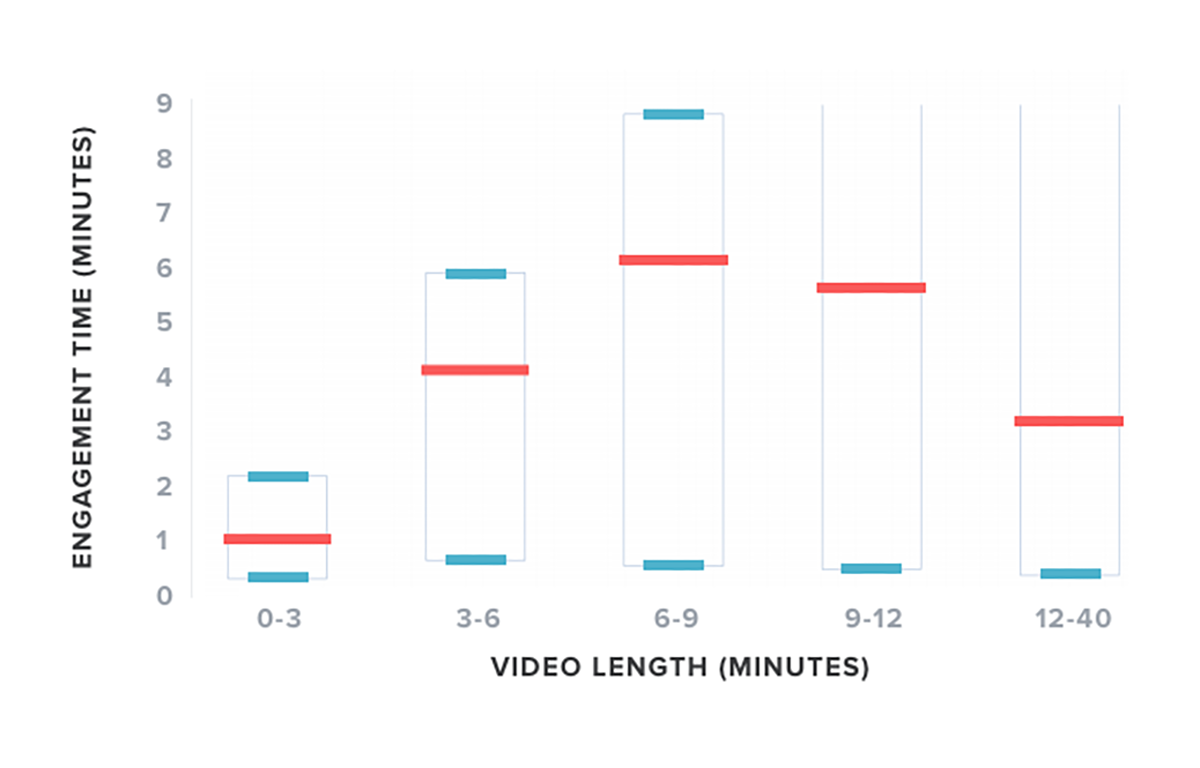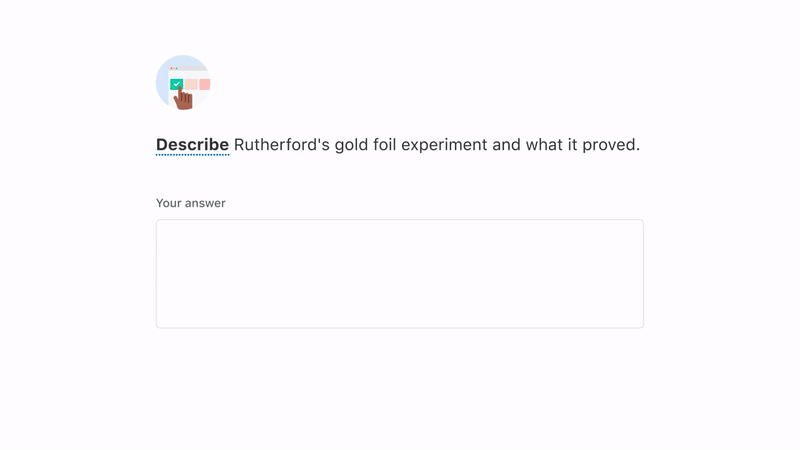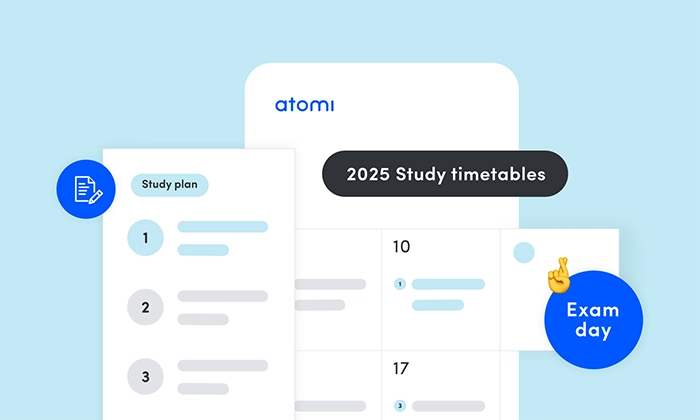Why six-minute lessons boost student engagement

Turns out, the average student isn’t paying attention for a full 50-minute lesson.
So, how long do students stay truly focused before engagement starts to drop? After analysing over a million Atomi video lesson views, we found the magic number: six minutes. And it's not just us, researchers at MIT and the University of Rochester found the same thing.
So, what can you do to keep the learners of today engaged in your next lesson?
We chatted with Will Ansell (STEM Content Manager at Atomi) and Darcy Campbell (Curriculum Lead at Atomi) to break it down, with practical tips for applying this bite-sized approach to content in class, online and across your whole department.
Let’s get into it.
Why six minutes works (and what cognitive load has to do with it)
Keeping students engaged is about designing content that actually works with their brains, not against them. Darcy explains:
There’s only so much a brain can process at once before it stores it into long-term memory,
This is where cognitive load theory comes in. Learning is naturally hard; that’s called intrinsic cognitive load. But the way information is presented (extrinsic load) can either support or sabotage learning.
Atomi’s approach to content focuses on reducing that extrinsic load so students aren’t overwhelmed before they even begin.
We do this by:
- Keeping lesson length short (usually under 6 minutes)
- Structuring content with clear sections and mini recaps
- Using minimal, clean layouts to reduce distractions
- Including only key information on the screen at once
- Ramping difficulty across lessons so students build confidence as they go
We tend to see that students’ abilities to handle lots of information is shrinking, just because of the way attention spans are going. We know that we can't sit there and present a 40-minute video. We know that we need to break it up into smaller chunks so that you can actually process the information.
- Darcy Campbell, Curriculum Lead at Atomi
Want to learn how to save time, boost student engagement and improve learning outcomes? Download our free evidence-based guide to cognitive load theory, packed with actionable tips you can use in your classroom straight away.
The link between chunking and cognitive load
There’s a reason why delivering content in short, bite-sized lessons is so effective for boosting student engagement. It harnesses a powerful strategy known as chunking.
Chunking is how the human brain learns best. That’s why Atomi’s lessons are short and sharp and are designed to drive engagement.
Here’s what we mean: Atomi’s lessons utilise chunking to break down big topics into small, manageable chunks. By harnessing the principles of explicit teaching, chunking helps to reduce cognitive loads and make it easier for learners to process one piece of information at a time before moving on to the next logical ‘chunk’.
We always want to group content logically and thematically. So all lessons are broken down into sections.
And within lessons, students build from easy to hard, which keeps things manageable while building skills and knowledge progressively.
Across all of Atomi’s content, the same consistent lesson structure is used across subjects and year levels: introduction, key teaching points, examples, a checkpoint and a conclusion.
But the exact length of lessons adjusts depending on a student’s year level. For example, Year 7 students will be delivered shorter videos that are broken up by more interactive elements (like quizzes and tests) than Year 12 students, who are better placed to stay engaged with a full six-minute video.
We write self-contained chunks that can build on top of one another, kind of like Lego blocks.
It’s not just about attention; it’s about retention
Shorter lessons don’t just hold attention; they improve memory. When students are asked to absorb too much at once, information can slip through the cracks. But when it’s broken into smaller, digestible chunks, students actually retain more.
Each Atomi lesson is carefully structured to start simple and build in complexity. Section 1 introduces the concept, Section 2 deepens understanding, and Section 3 applies it in more complex ways. Then comes a recap to consolidate, followed by a quiz or challenge to reinforce.
In junior years, Atomi’s lessons are even more interactive: quick videos, bite-sized text, drag-and-drop questions, and checkpoints that help students pause and process. This is intentional and designed to deliver content rapidly to keep younger learners engaged.

How to teach in six-minute sprints
So, what does a six-minute learning block actually look like? Here’s a quick start guide to implementing the six-minute approach into your classroom:
- 6 mins - Teach: Deliver a short concept via an Atomi video or live explanation.
- 2 mins - Pause: Recap, question, or reflect to check understanding using a quiz.
- 6 mins- Apply: Let students practise, create, or collaborate.
Repeat this flow a few times in a single lesson, and you’ll see students stay focused, remember more and participate more actively.
But what else can you do to keep students engaged in lessons? Below, we break down how Atomi can support educators (like you) to plan, prepare and deliver lessons in ways that meaningfully engage students with their learning.
Tip 1. Bring real-world examples and modelling into your lessons
Keeping lessons short is a practical first step to boosting student engagement. The next step? Finding ways to make theoretical topics relevant and meaningful for learners, which is where real-world, worked examples come in.
This is particularly important in subjects like Science and Maths, where finding ways to make learning material practical and tangible can help to boost understanding and retention.
That’s why Atomi puts extra emphasis on modelling, particularly in maths lessons. Every maths lesson is packed with practical, fully-worked explanations that show exactly how to solve problems — and the common mistakes or tricky moments to watch out for during the problem-solving process.
We have loads of modelled questions in maths. It's not just ‘here’s the answer’—we’re showing students how to think it through, step by step. By modelling how to approach typical Maths questions first, we can really help guide students when they get to their own problems to work independently throughout those as well.
- Will Ansell, STEM Content Manager at Atomi
This modelling approach builds procedural fluency and self-trust. Students see exactly what they need to do, helping to build confidence when it comes to times for them to jump into a problem on their own. Plus, it breaks up content and gives students a chance to apply what they’ve just learnt.
Tip 2. Use real-time data to deliver the right content to the right student at the right time
Differentiation is a powerful way to deliver more impactful, engaging lessons. With the right tools and support in your corner, delivering a personalised learning experience to every student is possible — even at a whole-class level.
“You don’t need five versions of the same worksheet,” Will says. “Instead, Atomi helps you see who’s stuck on what, and respond in real time .”

Using Atomi’s markbook, you can easily track performance by student, by topic, and over time. So if one group struggles with algebra but excels at trigonometry, you know where to step in and where to let students fly.
What makes markbook so effective is the way it makes real-time stats on student performance actionable. Once you identify that a student is struggling with a concept, you can instantly assign custom revision resources or tasks that are designed to be short, sharp and deliver curriculum-aligned content in an engaging way.
In short: markbook makes differentiate easy to implement at scale, helping to boost student engagement and academic achievement in the process.
Students also get access to their own data, building ownership of their learning. They can review their past results, see where they’ve improved, and make informed choices about what to revisit.
Tip 3. Use practice questions to shorten the feedback loop for learners
Feedback is key to keeping learners engaged, and should be fast, clear, and actionable. That’s what Atomi’s questions deliver.
From active recall quizzes to topic tests and exam practice, these questions are a powerful way to keep learners engaged and receive real-time feedback on how they’re tracking with their learning.

Plus, Atomi delivers instant personalised feedback powered by AI. Instead of a basic ‘correct’ or ‘incorrect,’ students received detailed feedback showing where they may have gone wrong and what to do differently next time.
It’s all about giving students more ways to engage with their learning and fewer opportunities to fall behind unnoticed.
Try Atomi for free and start boosting student engagement today
Atomi’s lessons are short, sharp, and built for how students actually learn. Whether you’re teaching Maths, English or anything in between, Atomi helps you deliver content that clicks, in six minutes or less. Get started for free.
Keep Learning: Download our free Head of Department’s Guide to Boosting Engagement - packed with strategies, lesson planning frameworks, and success stories from schools using Atomi to drive better outcomes.
References
Subscribe to our newsletter
Get the latest teaching and learning insights delivered to your inbox.
You can unsubscribe at any time, no hard feelings.
Subscribe to our newsletter
Get the latest teaching and learning insights delivered to your inbox.
You can unsubscribe at any time, no hard feelings.
What's Atomi?
Easy to understand, super engaging, and matching what you’re learning in class. Available for 100s of subjects across your high school years.
With heaps of questions and smart AI feedback that shows you what you’ve nailed and what to work on—so you won’t just feel ready, you’ll be ready.
Improve your study game, get AI-driven tips tailored to you, keep tabs on your progress and unlock insights so you can always hit your goals.
What's Atomi?
Captivating and impactful video-first content, fit for all types of learners and grounded in the absolute must-have info of the high school curriculum.
Active recall quizzes, topic tests and exam practice enable students to get immediate feedback and build skills, while allowing teachers to differentiate instruction.
Create engaging learning experiences with easy-to-use tasks, get actionable insights to differentiate instruction and experience intelligent personalisation for your students.
What's Atomi?
Short, curriculum-specific videos and interactive content that’s easy to understand and backed by the latest research.
Active recall quizzes and practice sessions enable students to build their skills, put knowledge into practice and get feedback.
Our AI understands each student's progress and makes intelligent recommendations based on their strengths and weaknesses.

.png)


